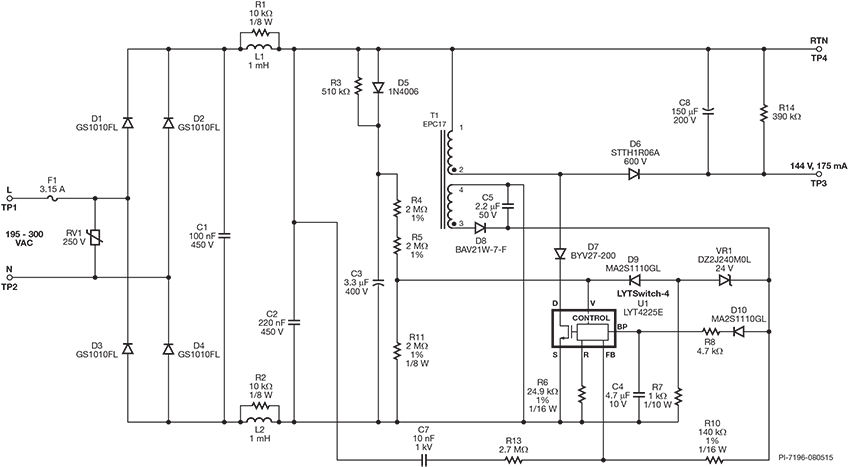Follow along with the video below to see how to install our site as a web app on your home screen.
Note: This feature may not be available in some browsers.
If you are having problems with the bridge rectifiers then this project is probably to complex.I tried the design with bridge rectifier but it was unsafe.

Note that, because the circuit Ron shows is non-isolated, it is also unsafe.
Interference suppression.What is the use of the circuitry before the bridge?
I got hold of a design using a link switch of Power Integrations and with the PI Expert Suite software, I got the following result. But I am having some problem understanding the circuit. What is the use of the circuitry before the bridge?
If the supply was "wide range" of power then I agree. Because the load is very constant the separate winding is pretty good.and that's not even a very good constant voltage - as it uses feedback from a separate winding
I don't have time to look now. Some of these only voltage feed back to protect from over voltage. Some of the ICs are current in regulated. So they pull power off the line until they reach a certain current. Current in translates to current out.That looks to be a voltage regulator?
Some of the ICs are current in regulated. So they pull power off the line until they reach a certain current. Current in translates to current out.
